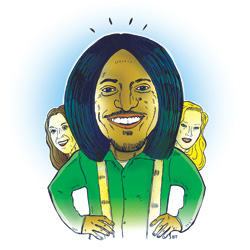
.img-block {display:inline-block;width:250px;margin-right:10px;vertical-align:top;margin-bottom:10px;} .img-block span {display:block;background:#000;text-transform:uppercase;color:#FFF;padding:4px;text-align:center;font-weight:bold;font-size:14px;} p.boxxy {display:inline-block;width:330px;vertical-align:middle;}
 The Power of Habit, by New York Times reporter Charles Duhigg, examines habits good and bad. Duhigg talks us through four companies that found success by swapping business-as-usual routines with smarter habits.
The Power of Habit, by New York Times reporter Charles Duhigg, examines habits good and bad. Duhigg talks us through four companies that found success by swapping business-as-usual routines with smarter habits.
 Starbucks
Starbucks
As Starbucks planned its growth strategy in the '90s, managers realized that employees regularly cracked under pressure. (Tears were common.) Starbucks implemented institutional habits for baristas, called the LATTE method: listen, acknowledge, take action, thank the customer, and explain why the problem occurred. Customer (and employee) satisfaction skyrocketed.
 Alcoa
Alcoa
The sluggish aluminum company hired Paul O'Neill as CEO in 1987, hoping he'd boost revenue. To the chagrin of investors, he chose to focus his energies on decreasing employee accidents, the result of unsafe work habits. O'Neill streamlined the company's production process to force cautiousness, and by the time he retired in 2000, Alcoa's net income had increased fivefold.
 Febreze
Febreze
Launched in 1993 as an odor-killing product, Febreze was a flop. Why? "The people who needed it, who lived with nine cats, had adapted to the odor," says Duhigg. While studying videos of folks making their beds, P&G marketers noticed one consistent habit: Subjects looked proud upon chore completion. Febreze was rebranded as a post-cleaning reward; it now makes $1 billion annually.
 Arista Records
Arista Records
When Arista introduced radio to Outkast's "Hey Ya!" in 2003, listeners weren't interested. "We like songs that are familiar," Duhigg says, and "Hey Ya!" was too unusual. Arista got some help when stations sandwiched the tune between "sticky" artists such as Christina Aguilera and Celine Dion. In four months, the number of folks tuning out dropped significantly, and "Hey Ya!" is still stuck in our heads.
A version of this article appears in the March 2012 issue of Fast Company.